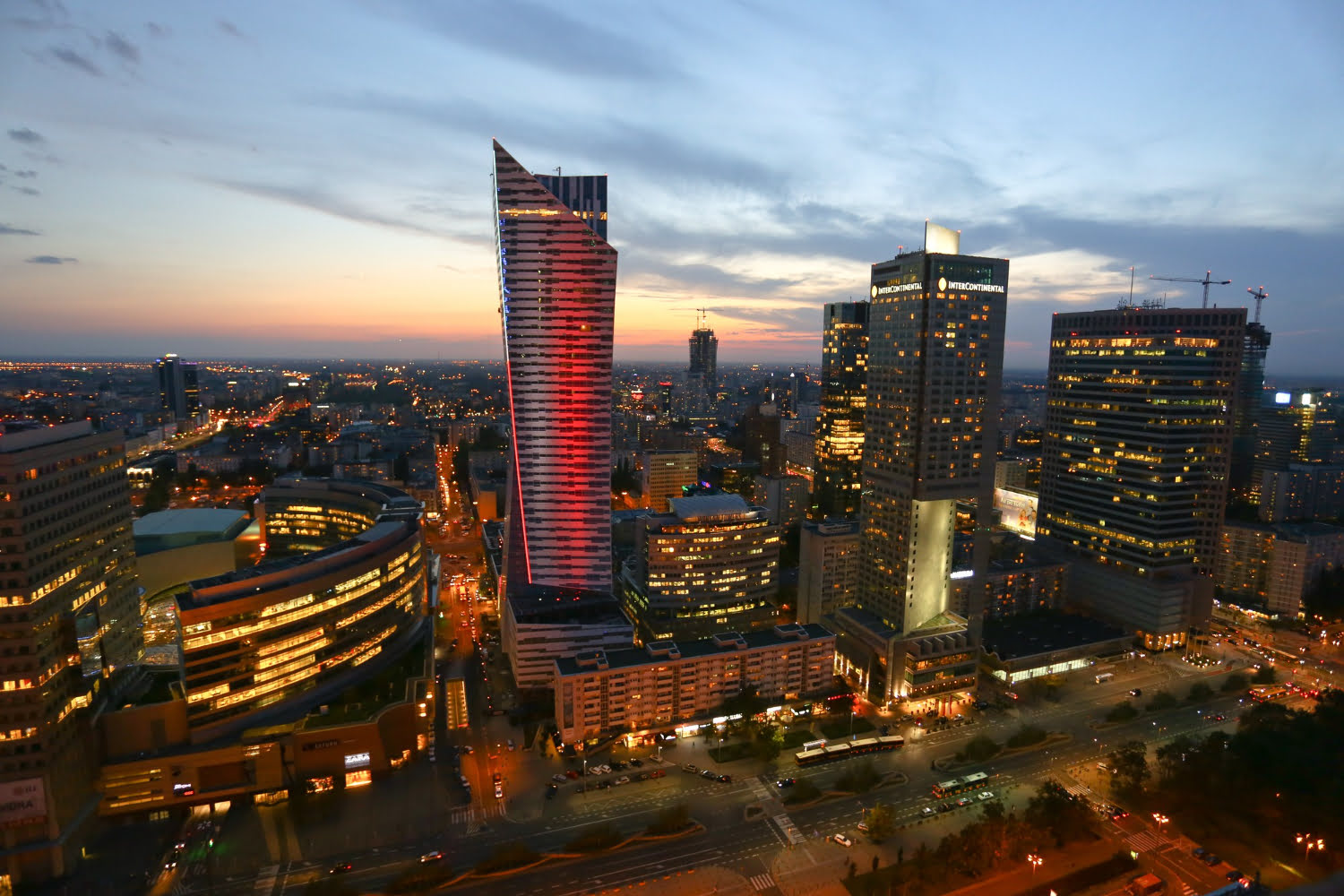Warsaw, as Poland’s dynamic capital, attracts students from across the country and abroad. Universities such as the University of Warsaw, Warsaw University of Technology, and SGH are located in different parts of the city, making the choice of the right district to live in crucial. For students, not only rental prices matter, but also commute, infrastructure, proximity to universities, and quality of life.
In the following article, we analyze the best Warsaw districts for students, considering their pros, cons, and characteristics.
Best Warsaw Districts
1. Śródmieście – the Heart of Academic Warsaw
Pros:
- Proximity to major universities (UW, ASP, SGH)
- Excellent public transport: metro, trams, buses
- Rich cultural offerings: cinemas, theaters, museums, bars
- Access to libraries and research centers
Cons:
- High rental prices
- Noise, crowds, lack of privacy
Overall rating: Śródmieście is a Warsaw district ideal for students who enjoy urban lifestyle, value proximity to universities and rich cultural offerings. However, it requires a larger budget.
Starting studies in Poland? Looking for an affordable student room in Warsaw without hidden fees? Check out our offer!
2. Mokotów – the classic academic choice
Pros:
- Proximity to SGH, PW and university campuses
- Well-developed infrastructure: shops, gyms, restaurants
- Good connection to city center (metro, trams)
- Intimate atmosphere deeper in the district
Cons:
- Property prices rising with location attractiveness
- Difficult commute during rush hours
Overall rating: Mokotów is a part of Warsaw that is prestigious but also well-situated. It’s a district where students will find balance between tranquility and urban pace of life.
3. Ursynów – modern district with student soul
Pros:
- Modern buildings, lots of green areas and parks
- Proximity to Kabaty Forest
- Developed metro network (M1)
- Cheaper than Śródmieście or Mokotów
Cons:
- Greater distance from some universities
- Lack of vibrant nightlife
Overall rating: Ursynów is a Warsaw district recommended for students seeking peace, modernity, and good metro access to Warsaw’s center.
4. Żoliborz – Atmospheric Choice for the Demanding
Pros:
- Intimate, elegant atmosphere
- Proximity to center
- Many parks and squares
- Good public transport
Cons:
- High property prices
- Small number of cheaper rental options
Overall rating: Żoliborz is an ideal place for students who value aesthetics, peace, and proximity to the center. It’s a district with soul and class, but requires a higher budget.
5. Bielany – green enclave with good access
Pros:
- Proximity to UKSW and AWF
- Lots of greenery, parks, proximity to Kampinos
- Quiet, safe environment
- Metro access (M1)
Cons:
- Distance from some universities in the center
- Fewer job and entertainment opportunities
Overall rating: Bielany is a Warsaw district for students preferring quiet, nature, and comfortable study conditions. Excellent infrastructure and access compensate for the distance from city center.
6. Praga Północ – for artistic souls and atmosphere seekers
Pros:
- Low rental prices
- Historic, artistic district
- Rich cultural life
- Proximity to center
Cons:
- Lower safety level in some areas
- Uneven infrastructure quality
Overall rating: Praga Północ is a district for students who value atmosphere, art, and affordability. It’s worth living where the capital’s cultural ferment begins.
7. Wola and Ochota – close to center, but with character
Pros:
- Good access to Warsaw center and universities
- Lower costs than Śródmieście
- Housing diversity: tenements and modern buildings
Cons:
- Crowds, traffic jams
- Fewer green areas than Bielany or Ursynów
Overall rating: These Warsaw districts are the golden mean between price, location, and access to universities. They’re worth considering when searching for rentals.
Comparison of Warsaw Districts for Students
| District | Rental Price | University Proximity | Public Transport | Green Areas | Lifestyle |
| Śródmieście | High | Excellent | Very good | Average | Intensive |
| Mokotów | High | Very good | Good | Good | Urban with class |
| Ursynów | Average | Good | Very good | Very good | Family-friendly, peaceful |
| Żoliborz | High | Good | Very good | Good | Intimate, artistic |
| Bielany | Low-Average | Good | Very good | Very good | Green, peaceful |
| Praga Północ | Low | Good | Good | Average | Artistic |
| Wola/Ochota | Average | Very good | Good | Average | Balanced |
Advice from Nearby:
“For students, we primarily recommend Ursynów and Bielany. These districts offer modern properties, access to green areas, and very good communication with the city center. If budget allows, Żoliborz and Mokotów will provide a higher standard of living. Remember to pay attention not only to distance from university, but also to quality of life in a given district.”
Looking for student accommodation in Warsaw? Find it with Nearby
Planning to study in the capital and wondering which Warsaw district will be best for starting out? Whether you care about quick access to Warsaw’s center or peace and green areas – Nearby will help you find the perfect place to live. Our platform connects students with matched rental offers in different parts of the capital – from atmospheric Żoliborz, through green Bielany, to the dynamically developing Białołęka.
Looking for comfort, good communication, and reasonable living costs? It’s worth considering capital districts that stand out from others in terms of living conditions and property availability in Warsaw. With Nearby, you’ll find your dream student room.
Summary – which Warsaw District is Best for Students?
Choosing a place to live in Warsaw as a student isn’t easy, but a well-thought-out decision can significantly impact study comfort and daily life. Districts such as Śródmieście, Mokotów, Ursynów, or Bielany offer both excellent public transport and rich infrastructure. It’s worth living where university proximity combines with conditions conducive to development. Warsaw is a city of contrasts, and each district offers something unique. The ranking shows that you don’t need to live in Warsaw’s center to enjoy quality of life.
Choose consciously, analyze location, and consider the lifestyle that suits you best. Whether you prefer the cultural energy of Praga, the peace of Bielany, or the modern functionality of Ursynów – Warsaw has a place for everyone.
Remember that if you’re starting studies in Poland, in Warsaw, and looking for good accommodation, you’ll find a student room in Nearby’s offer.
FAQ – Frequently Asked Questions
1. Which Warsaw district is best for students?
It depends on individual needs. If you value proximity to universities and cultural life – choose Śródmieście or Mokotów. If peace and green areas are more important – consider Bielany or Ursynów.
2. Is Wilanów a district for students?
Wilanów is considered one of Warsaw’s safest districts. Although living costs are higher than in other districts, it’s worth considering due to high quality of life and dynamic development.
3. Which districts have quick access to Warsaw city center?
Śródmieście, Mokotów, Żoliborz, Bielany, and Ursynów offer very good connections to Warsaw city center thanks to metro lines, trams, and buses.
4. Where is rent the cheapest?
You’ll find the lowest rental prices in districts like Praga Północ, Białołęka, or Wawer. Despite being farther from the center, they often offer good living conditions and rapidly developing infrastructure.
5. Which Warsaw districts are the safest?
Among Warsaw residents, Wilanów, Ursynów, and Żoliborz are considered some of the safest. These are places eagerly chosen by families with children and people seeking peace and quiet.
6. Is it worth living in Bielany as a student?
Yes, Bielany is a green district with good transportation and a peaceful atmosphere. It stands out from other districts with its large number of parks and playgrounds, making it an ideal place for families, but also for students who value nature and quiet.
7. What should you pay attention to when choosing an apartment in Warsaw?
Choosing an apartment in Warsaw depends on university location, lifestyle, budget, and preferences. It’s worth comparing individual districts in terms of living costs, infrastructure, access to transportation, and proximity to green areas.





